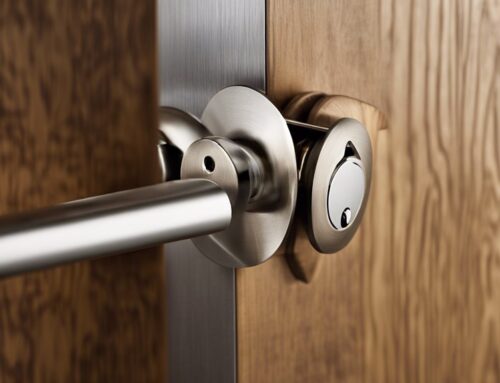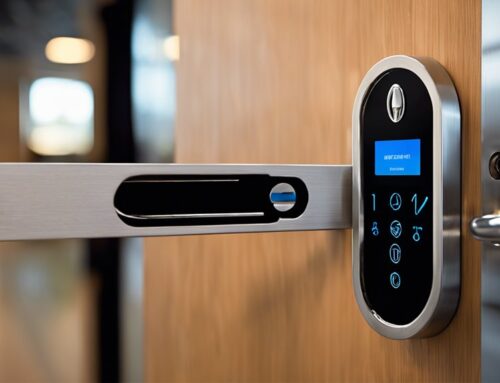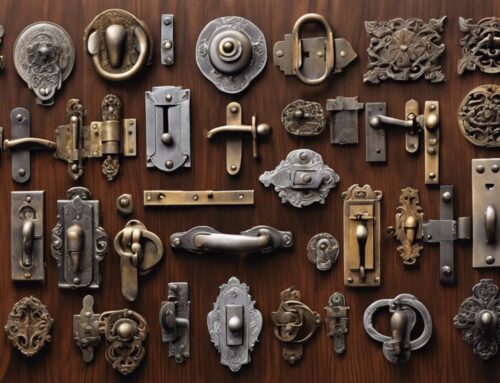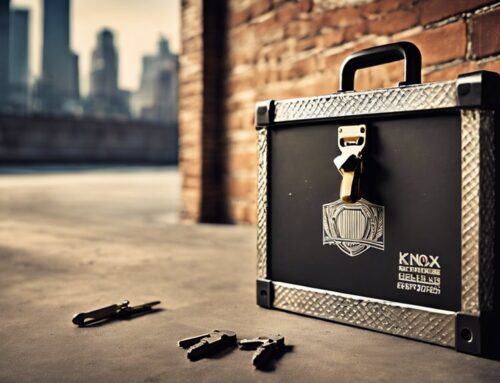When you consider the security landscape, tubular pin tumbler locks stand out due to their unique design and functionality. These locks aren’t just about keeping your belongings safe; they also incorporate features that can thwart even experienced lock pickers. You might wonder how their design enhances both reliability and security. Yet, while they offer certain advantages, they’re not without vulnerabilities. As crime tactics evolve, understanding the mechanics behind these locks becomes critical. What aspects should you prioritize to guarantee peak protection?
Key Takeaways
- Tubular pin tumbler locks feature a cylindrical shape that enhances security by complicating unauthorized entry and reducing risks of picking.
- Their unique key design ensures precise alignment of multiple rotating pins, offering robust protection against unauthorized access.
- High-quality materials, including hardened steel pins and durable shells, enhance longevity and resistance to manipulation or drilling attempts.
- Regular maintenance, such as lubrication and inspection, is crucial for sustaining their functionality and security level over time.
- Combining tubular locks with additional security measures, like deadbolts, creates multiple layers of protection, significantly improving overall security effectiveness.
Design and Anatomy
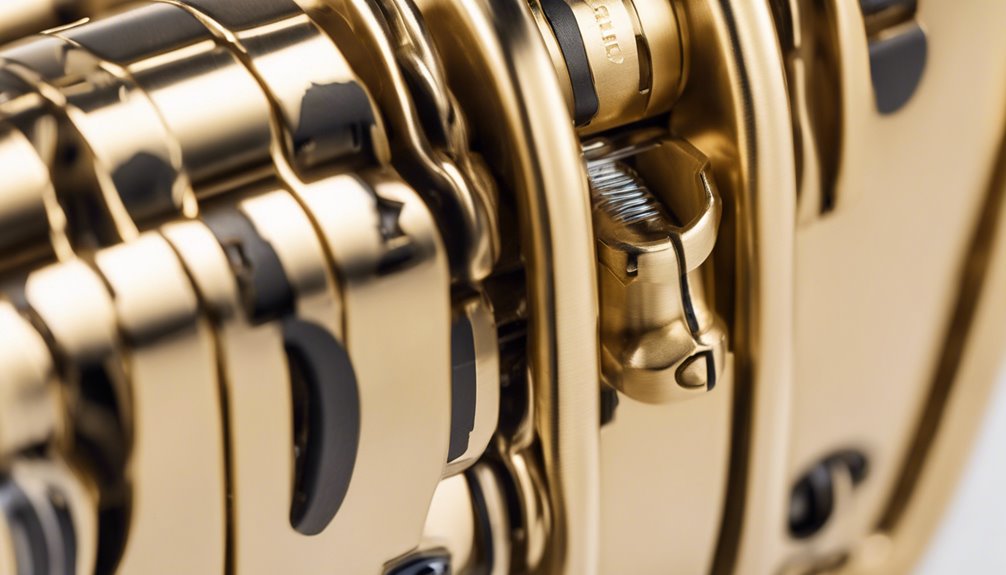
The design of tubular pin tumbler locks showcases a clever integration of simplicity and security.
You’ll notice their cylindrical shape, which lends itself to uniformity in function and manufacturing. The core consists of several rotating pins, positioned within a tubular casing, allowing for a single key to engage multiple lock mechanisms simultaneously.
This design minimizes the chances of locking failure by ensuring that every pin aligns perfectly when the correct key is used. The key itself features a unique cut pattern, corresponding precisely to the locking pins’ heights.
As a result, the tubular pin tumbler lock balances ease of use with robust security measures, considerably reducing the likelihood of unauthorized access when expertly engineered and installed.
Benefits and Applications
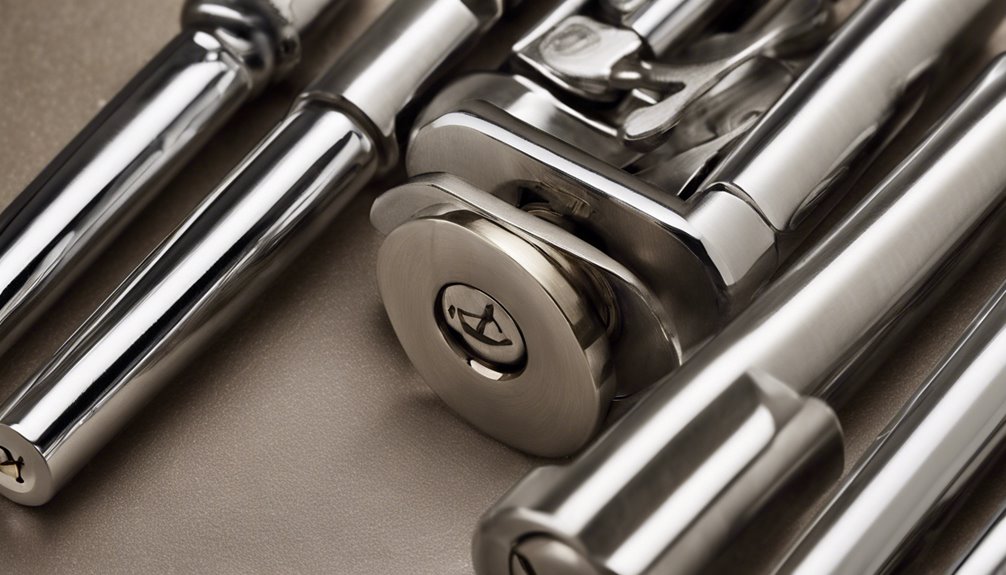
Tubular pin tumbler locks offer significant advantages that make them a preferred choice for various locking applications.
Their unique design enhances security and usability in settings requiring dependable access control. Here are some key benefits:
- Higher security level: The tubular design makes it difficult for unauthorized access, reducing the risk of picking and manipulation. Additionally, these locks provide enhanced resistance against common intrusion methods.
- Versatility: You can find these locks in applications ranging from vending machines to bicycle locks, showcasing their adaptability.
- Ease of use: Their key insertion and operation streamline access, essential for high-traffic environments.
As you evaluate locking solutions, consider the tubular pin tumbler lock’s efficiency, reliability, and security, making it a smart choice for both commercial and residential needs. Additionally, these locks can be integrated with high-security measures, ensuring enhanced protection against unauthorized duplication.
Embrace this technology for ideal performance.
Components and Materials
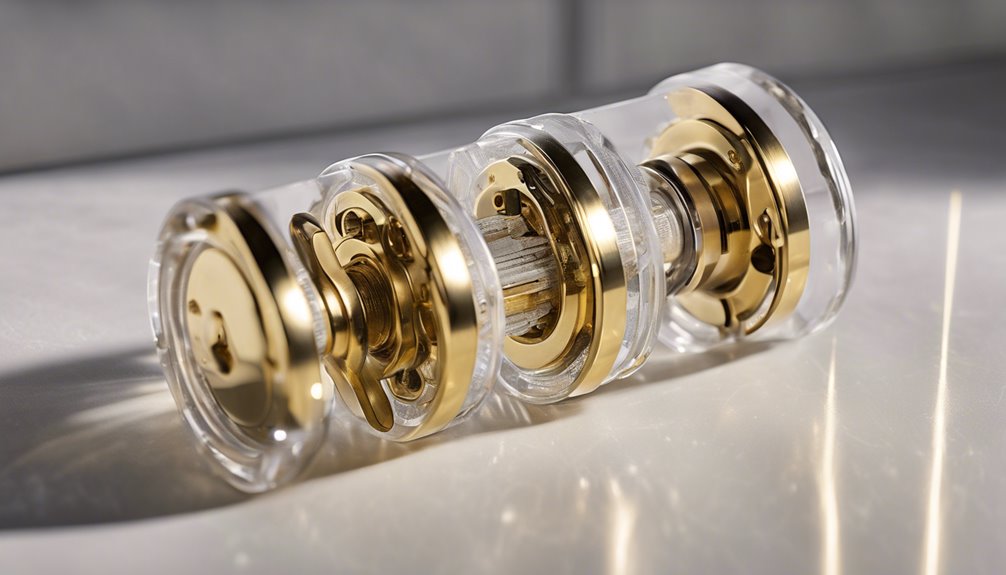
When evaluating tubular pin tumbler locks, understanding their components and materials is crucial for evaluating their durability and performance.
These locks typically consist of a tubular shell, which houses the pin mechanism, crafted from high-grade steel or brass for enhanced resistance to manipulation and corrosion. The pins themselves, often made of hardened steel, guarantee longevity and greater security. The importance of tumblers in security is evident in how effective they are at preventing unauthorized access.
The cylinder moves smoothly thanks to a well-engineered spring system, which is fundamental for reliability. You’ll find that quality locking mechanisms utilize precision machining techniques, fundamental for preventing excess wear over time. Additionally, the effectiveness of a tubular pin tumbler lock relies heavily on the alignment of pin stacking and alignment, which is essential in ensuring the pins align correctly with the cylindrical plug during the key insertion.
Choosing locks with superior materials and components not only bolsters security but also guarantees peace of mind, making it a prudent investment for anyone serious about safeguarding their property.
Vulnerabilities and Picking Techniques
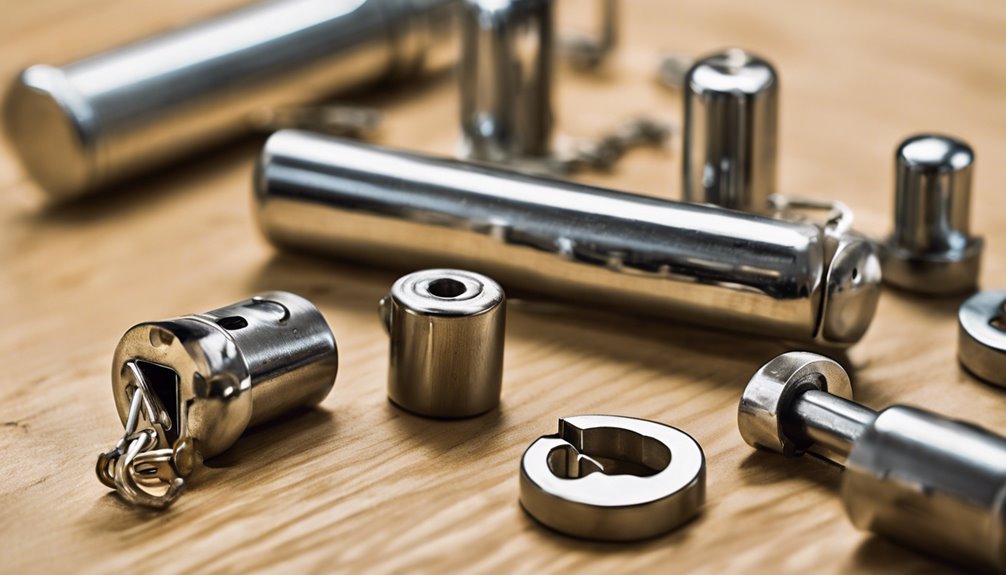
When considering tubular pin tumbler locks, it’s crucial to recognize their vulnerabilities and the techniques commonly used to exploit them.
You’ll find that understanding picking tools, drilling methods, and the inherent weaknesses of these locks can greatly enhance your security strategies.
Common Picking Tools
Understanding the vulnerabilities of tubular pin tumbler locks is essential if you want to appreciate how common picking tools exploit these weaknesses.
These tools can manipulate the pins and bypass the locking mechanism, giving unauthorized access.
Key elements at play include:
- Tension Wrenches: Essential for applying the correct pressure while manipulating the pins.
- Tubular Lock Picks: Specifically designed to reach all pin positions quickly, enabling effective bypassing.
- Genuine Override Keys: Though harder to use, they can serve as a last resort for those proficient with them.
Drilling Techniques Explained
Drilling techniques pose significant vulnerabilities for tubular pin tumbler locks, making them a preferred method for unauthorized entry.
With minimal equipment, intruders can exploit the lock’s design, specifically targeting the pins or the core. When drilling, you’ll need to locate the precise point where the lock engages. Once you penetrate the surface, you’ll disrupt the locking mechanism, rendering it inoperative.
Understanding drill bit sizes and types is essential, as the wrong choice can lead to damaged components, making it more challenging to manipulate later. Additionally, employing a methodical approach—like using a core punch—allows for cleaner access points. Master these techniques, and you’ll recognize the serious risks that tubular pin tumbler locks present, emphasizing the need for continuous improvements in security measures. Implementing anti-drill plates can significantly increase resistance against drilling attacks, enhancing overall lock security.
Lock Vulnerability Factors
While tubular pin tumbler locks offer a secure mechanism against casual tampering, several vulnerabilities can compromise their integrity. Understanding these weaknesses is essential for enhancing security measures.
- Ineffective anti-picking features
- Susceptibility to bypass techniques
- Lack of robust material in less reputable models
You must be aware that lock picking, when performed with specialized tools, can exploit these vulnerabilities. Additionally, many locks have poor designs that allow for bypassing with simple manipulation. Many low-quality locks, as outlined by illusions of security, often fail to provide the intended protection, which can result in unauthorized access. High-security locks, such as those equipped with advanced tamper resistance, provide a much stronger defense against these vulnerabilities.
As a strong countermeasure, consider investing in higher-grade locks with advanced features, or employ supplemental security systems. Engaging in regular security assessments will help you address these vulnerabilities effectively, ensuring that your locking mechanisms remain a formidable barrier against unauthorized access.
Security Comparison
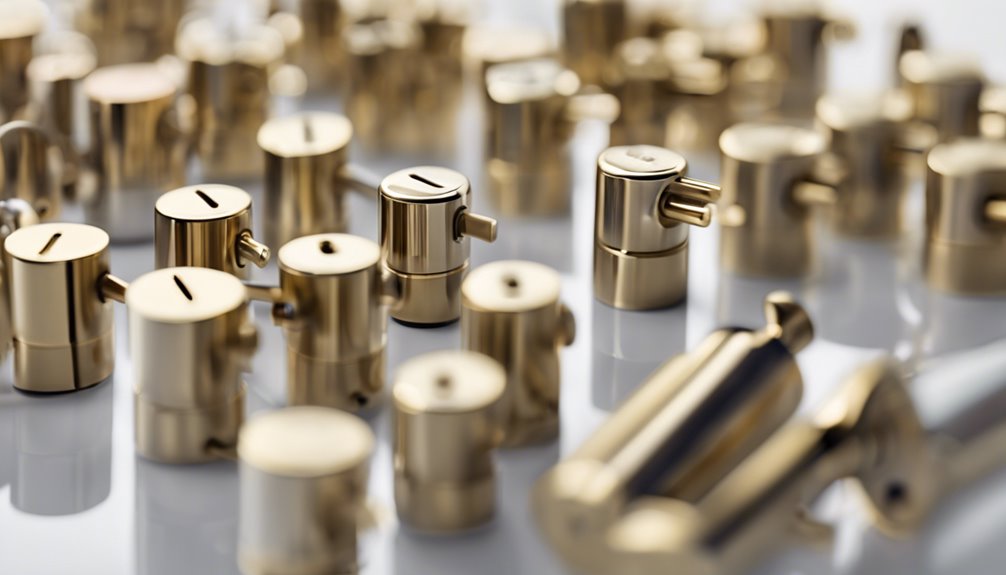
When considering security, analyzing the resistance of tubular pin tumbler locks to picking can reveal significant advantages over standard locks. You’ll find that their unique design often makes them more challenging for intruders to manipulate. This complexity arises due to the use of high-security lock pins, which are designed to thwart common picking techniques. Additionally, combining tubular locks with a higher quality deadbolts and lock-picking defense can provide even greater security against unauthorized access.
Resistance to Picking
The effectiveness of tubular pin tumbler locks in resisting picking can greatly influence your choice of security solutions.
These locks employ a unique design that makes them less susceptible to conventional picking techniques. Additionally, opting for cheaper options can often lead to less reliable security measures that can compromise safety.
- They’ve a circular keyway, limiting access for traditional lock picking tools.
- The pin stack configuration creates complex shear lines, enhancing security.
- Their construction often involves high-quality materials, adding durability against physical manipulation.
When securing your space, understanding the resistance these locks offer is essential.
Their design not only complicates unauthorized access but also raises the bar for would-be intruders.
By selecting tubular pin tumbler locks, you’re investing in a robust defense against one of the most common entry methods—picking. Additionally, these locks often feature advanced lock designs that further deter intruders, enhancing your home security.
Your security deserves that level of sophistication.
Comparison With Standard Locks
Unlike standard pin tumbler locks, tubular pin tumbler locks provide a significant advantage in security, making them a compelling choice for anyone serious about protecting their property.
Their design features a series of pins arranged in a circular pattern, which creates a more complex locking mechanism than the standard arrangement. This complexity renders them less susceptible to traditional lock-picking techniques. Additionally, correct installation techniques when fitting these locks can enhance their overall security effectiveness.
Moreover, tubular locks often utilize a unique keying system that adds a layer of protection against unauthorized duplication. While standard locks may rely on familiar key shapes, tubular keys are less common, reducing the risk of easily obtainable duplicates. Additionally, high-security locks offer features such as drill resistance, which further enhances protection against unauthorized access.
Maintenance and Considerations
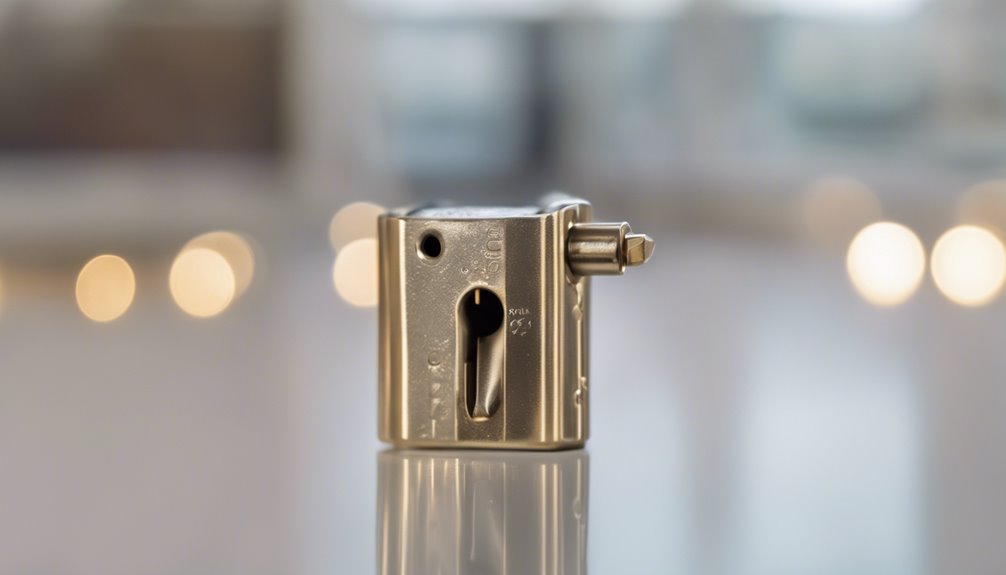
Although maintaining tubular pin tumbler locks might seem straightforward, neglecting routine care can lead to diminished security and functionality.
Regular maintenance isn’t merely a formality; it’s essential for ideal performance. You should focus on:
- Lubrication: Applying specialized lock lubricant prevents internal components from binding. Regular lubrication also reduces the risk of key breakage, which can occur when locks are not properly maintained.
- Inspection: Regularly checking for wear and tear helps identify potential weaknesses before they compromise security.
- Cleaning: Removing dust and debris ensures the lock operates smoothly. Additionally, using proper cleaning techniques can help prolong the life of your locks and maintain their effectiveness.
Frequently Asked Questions
How Do I Choose the Right Tubular Lock for My Needs?
When choosing the right tubular lock for your needs, assess the security requirements of your environment first.
Consider the lock’s grade, materials, and design features. You’ll want to evaluate the potential for picking or bumping—higher quality locks often resist these threats better.
Additionally, look into compatibility with your existing hardware.
Finally, factor in budget constraints while ensuring you’re not compromising safety for cost. A strategic choice is key to effective security.
What Are the Common Sizes of Tubular Keys Available in the Market?
When exploring tubular keys, you’ll encounter common sizes such as 7-pin and 8-pin configurations.
Each size offers different security levels, with 8-pin keys generally providing more combinations than 7-pin ones.
It’s essential to evaluate the specific applications of these locks.
By selecting the right key size, you enhance security effectiveness and prevent unauthorized access.
Understanding these options empowers you to make informed decisions, ultimately ensuring ideal protection for your property.
Can I Rekey a Tubular Lock, and How Is It Done?
Sure, you can rekey a tubular lock, just like you can try to teach a cat to fetch—good luck with that!
You’ll need a rekeying kit, which includes new pins. First, remove the lock from the door, then find the retainer ring to access the pins.
Swap the old ones with the new ones according to your desired key. Reassemble everything, and voila!
You’ve successfully secured your domain without modern wizardry!
Are Tubular Locks Weather-Resistant for Outdoor Use?
Tubular locks aren’t inherently weather-resistant.
While some models feature protective coatings or seals improving their durability, it’s essential to take into account environmental factors.
Humidity and extreme temperatures can adversely affect their internal components, leading to potential malfunctions.
If you’re planning on using them outdoors, opt for a high-quality lock designed specifically for outdoor use and regularly maintain it to guarantee peak performance and longevity.
Your choice matters in preserving security under the elements.
How Do I Know if My Tubular Lock Needs Servicing?
To determine if your tubular lock needs servicing, observe its performance closely.
If it feels stiff, requires excessive force to turn, or makes unusual noises, these signs indicate potential wear.
Regularly inspect for dirt, corrosion, or misalignment, as these factors can compromise functionality.
Keep an eye on key movement; any sticking can suggest internal issues.
Addressing these concerns promptly guarantees peak security and extends the lifespan of your lock, making timely servicing essential.
Conclusion
In the domain of security, tubular pin tumbler locks serve as your steadfast fortress, expertly designed to thwart unauthorized access. While they boast impressive features, understanding their vulnerabilities and maintaining them is vital for peak performance. Just like a well-tuned machine, regular upkeep guarantees smooth operation and resilience against evolving threats. By investing in these locks and their care, you’re not just securing a door; you’re safeguarding your peace of mind in an unpredictable world.


